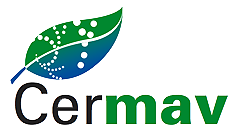In recent years, we have shown the potential of electrospun nanofibrous membranes made of polysaccharidic chiral selectors (CSs) for efficient chiral resolutions via filtrations. It is thus of great importance to expand the number of membranes made of various CSs for the resolution of a wide range of chiral compounds. In this article by Dr Steve Nono-Tagne and Dr Issei Otsuka (CNRS researcher) in collaboration with Friedrich-Schiller University of Jena (Germany), we reported the electrospinning of new benzyl carbamate derivatives of cellulose synthesized via a novel “modular” approach developed by our German collaborators to form a new type of enantioselective membranes for chiral resolutions of racemic compounds.
Asbtract :
“Electrospun nanofibrous membranes made of chiral selectors (CSs) have shown their potential for efficient chiral resolutions via filtrations. It is thus of great importance to expand the number of electrospun membranes made of various CSs for the resolution of a wide range of chiral compounds. Here, the electrospinning of two benzyl carbamate derivatives of cellulose, namely cellulose benzyl carbamate (CBzC) and cellulose 4‐chlorobenzyl carbamate (CCBzC), to form a new type of enantioselective membranes for chiral resolutions of racemic compounds, is reported. The morphology of the electrospun membranes is studied by optical microscopy and scanning electron microscopy in relation to the electrospinning process parameters. Liquid‐liquid permeation experiments of the racemic compounds, ( R , S )‐1‐(1‐naphthyl)ethanol (( R , S )‐NET), ( R , S )‐1,1′‐bi‐2‐naphtol (( R , S )‐BNP), ( R , S )‐naproxen (( R , S )‐NAP), and ( R , S )‐benzoin (( R , S )‐BNZ) through the membranes demonstrate preferable permeations of ( R )‐ or ( S )‐enantiomers depending on the combinations between the CSs and the racemates. Molecular docking simulations indicate the differences in the binding type, number, and free energies between the CSs and the enantiomers.”
The article is available in open access through the Editor’s website: https://doi.org/10.1002/mabi.202400415 as well as HAL website: https://hal.science/hal-04809238v1
